
by Ria Olivier | May 31, 2024 | Commemorative Days, Environment, SANAP
National Environment Month is celebrated in June, with the South African government and captains of industry leading the way by stimulating awareness on environmental issues and challenging all to become agents for change. June is Environment Month under the theme “Think, Eat, Save and reduce your foodprint”. we celebrate our Antarctic region environment.
 The theme for World Environment Day and National Environment Month rests on three pillars. According to the United Nations Food and Agriculture Organisation (FAO), every year 1.3 billion tons of food is wasted. Therefore, communities are encouraged to “Think” before discarding food off as waste. The second pillar, “Eat” encourages consuming food in such a way that the environmental impact is reduced. Third pillar encourages communities to make wise decisions about discarding food and “Save” as far as possible.
The theme for World Environment Day and National Environment Month rests on three pillars. According to the United Nations Food and Agriculture Organisation (FAO), every year 1.3 billion tons of food is wasted. Therefore, communities are encouraged to “Think” before discarding food off as waste. The second pillar, “Eat” encourages consuming food in such a way that the environmental impact is reduced. Third pillar encourages communities to make wise decisions about discarding food and “Save” as far as possible.
World Environment Day 2024 focuses on land restoration, halting desertification and building drought resilience under the slogan “Our land. Our future. We are #GenerationRestoration.” We cannot turn back time, but we can grow forests, revive water sources, and bring back soils. We are the generation that can make peace with land.
Environmental events celebrated during National Environment Month include:
- 5-Jun World Environment Day
- 8-Jun World Oceans Day
- 19-Jun World Albatross day
- 21-Jun International Day of the Celebration of the Solstice

by Ria Olivier | Mar 11, 2024 | Announcement, Environment, Invasion Biology, Marine Protected Area, Marion Island, Mice Eradication, Prince Edward Island, Prince Edward Islands
 MINISTER CREECY LAUNCHES THE 3RD NATIONAL STATUS OF BIOLOGICAL INVASIONS AND THEIR MANAGEMENT IN SOUTH AFRICA
MINISTER CREECY LAUNCHES THE 3RD NATIONAL STATUS OF BIOLOGICAL INVASIONS AND THEIR MANAGEMENT IN SOUTH AFRICA
Full release available on Department of Forestry Fisheries nd the Environment website
 “We must continue investing in research and innovation, supporting studies that enhance our understanding of invasive species dynamics to improve management strategies. The 3rd National Status report on Biological Invasions serves as a clarion call for action reminding us of the urgency of the situation and the imperative to act decisively,”
“We must continue investing in research and innovation, supporting studies that enhance our understanding of invasive species dynamics to improve management strategies. The 3rd National Status report on Biological Invasions serves as a clarion call for action reminding us of the urgency of the situation and the imperative to act decisively,”
“Addressing the challenges posed by biological invasions requires a coordinated and collaborative effort. No single entity can tackle this issue alone. Government, academics, civil society organisations and communities must come together, pooling their knowledge, resources and expertise to develop effective prevention, early detection and control strategies,” said Minister Creecy.
 Thirdly, invasive species are devastating the unique and sensitive biodiversity of the Prince Edward Islands. For the first time, this report provides a separate assessment of the status of biological invasions and their management on the Prince Edward Islands. Although these islands are part of South Africa, their remote location and unique biodiversity warrant a separate assessment. Findings highlight the devastating impact of the house mouse, which is alien to the Marion Island. The mice feed on plants, and small animals including endangered seabirds. A bold plan to eradicate mice from the island has been developed and is due to be implemented in 2027. The eradication of mice from Marion Island is essential if its unique biodiversity is to be preserved.
Thirdly, invasive species are devastating the unique and sensitive biodiversity of the Prince Edward Islands. For the first time, this report provides a separate assessment of the status of biological invasions and their management on the Prince Edward Islands. Although these islands are part of South Africa, their remote location and unique biodiversity warrant a separate assessment. Findings highlight the devastating impact of the house mouse, which is alien to the Marion Island. The mice feed on plants, and small animals including endangered seabirds. A bold plan to eradicate mice from the island has been developed and is due to be implemented in 2027. The eradication of mice from Marion Island is essential if its unique biodiversity is to be preserved.

by Ria Olivier | Mar 1, 2024 | Data Management, Environment, Prince Edward Island, Research, SANAP
 A session has been included in the 6th SANAP symposium to include the Prince Edward Island scientific survey members as they were arriving late on the 29 November. As a cross discipline on Data Management and the Summer Survey Participants. Christel Hansen chaired the session ‘Data and frameworks in the support of polar research’.
A session has been included in the 6th SANAP symposium to include the Prince Edward Island scientific survey members as they were arriving late on the 29 November. As a cross discipline on Data Management and the Summer Survey Participants. Christel Hansen chaired the session ‘Data and frameworks in the support of polar research’.
 Above(l-r): Newi Makhado, Janine Schoombie, Chris Oosthuizen, David Hedding, Stefan Schoombie
Above(l-r): Newi Makhado, Janine Schoombie, Chris Oosthuizen, David Hedding, Stefan Schoombie
- Newi Makhado: Ecoregionalisation of the pelagic zone in the Subantarctic and subtropical Indian Ocean.
- Janine Schoombie: Studies of wind, plants and seabirds on Marion Island. (Abstract)
- Chris Oosthuizen: Marine predators: ecosystem sentinels that help inform Southern Ocean management. (Abstract)
- David Hedding: A geospatial database for the sub-Antarctic Prince Edward Islands. (Abstract)
- Stefan Schoombie: Non-breeding distribution and moulting activity of Blue Petrels (Halobaena caerulea) breeding on sub-Antarctic Marion Island.
- Christel Hansen: Consistent mapping and geospatial information representation in the Antarctic and sub-Antarctic: why South Africans should care. (Abstract)
 Above: Scientific Survey members taken on Prince Edward Island. Azwianewi Makhado, Maëlle Connan, David Hedding, Charlene Janion-Scheepers , Rowan Jordaan, Makhudu Masotla, Thomas Mufanadzo, Chris Oosthuizen, Liezl Pretorius, Janine Schoombie, Stefan Schoombie, Yinhla Shihlomule, and Elsa van Ginkel. Read more
Above: Scientific Survey members taken on Prince Edward Island. Azwianewi Makhado, Maëlle Connan, David Hedding, Charlene Janion-Scheepers , Rowan Jordaan, Makhudu Masotla, Thomas Mufanadzo, Chris Oosthuizen, Liezl Pretorius, Janine Schoombie, Stefan Schoombie, Yinhla Shihlomule, and Elsa van Ginkel. Read more

by Ria Olivier | Feb 28, 2024 | Biosecurity, Environment, Invasion Biology, Mice Eradication, Research, SANAP, SANAP Student


 The last session within the Marine and Antarctic Research Strategy research theme : : Ecosystems, biodiversity and biodiscovery was chaired by Pierre Pistorius of the Marine Apex Predator Research Unit (MAPRU) at Nelson Mandela University. To kick off the session, the Mouse-Free Marion (MFM) Project’s Assistant Project Manager, Sue Tonin, gave a plenary lecture. This was followed by more presentations on ornithology research. (Above: group photo of MAPRU with Sue Tonin. Left: Pierre Pistorius. Right: Sue Tonin)
The last session within the Marine and Antarctic Research Strategy research theme : : Ecosystems, biodiversity and biodiscovery was chaired by Pierre Pistorius of the Marine Apex Predator Research Unit (MAPRU) at Nelson Mandela University. To kick off the session, the Mouse-Free Marion (MFM) Project’s Assistant Project Manager, Sue Tonin, gave a plenary lecture. This was followed by more presentations on ornithology research. (Above: group photo of MAPRU with Sue Tonin. Left: Pierre Pistorius. Right: Sue Tonin)
 Above (l-r): Vonica Perold, Tegan Walker, Shamiso Banda, Danielle Keys, Eleanor Weideman
Above (l-r): Vonica Perold, Tegan Walker, Shamiso Banda, Danielle Keys, Eleanor Weideman
- Dr Sue Tonin Eradicating Invasive House Mice Mus musculus from Marion Island: Gains and Challenges (Abstract)
- Vonica Perold South Atlantic seabirds can be used as bioindicators to monitor small buoyant plastics at sea. (Abstract)
- Tegan Walker Influence of diet and environmental parameters on Brown Skua breeding success at Marion Island
- Shamiso Banda Gauging the threat: exposure and attraction of Sooty Albatrosses and White-Chinned Petrels to fisheries activities in the southern Indian Ocean
- Danielle Keys Foraging behaviour of adult Wandering Albatrosses (diomedea exulans) in relation to growth and success of their offspring.
- Pierre Pistorius Tracking Southern Ocean predators to identify ecologically important habitat
- Eleanor Weideman Seasonal attendance patterns and habitat use of three avian scavengers at sub-Antarctic Marion Island. (Poster)
 Above (l-r):Maelle Connan, Stefan Schoombie, Robyn Adams, John Cooper
Above (l-r):Maelle Connan, Stefan Schoombie, Robyn Adams, John Cooper
Maelle Connan and Stefan Schoombie were part of the Prince Edward Island Scientific Expedition and were able to join the session. Stefan’s presentation was given in the Summer Survey session later on in the day. Support for Sue’s plenary came from Robyn Adams, MFM Communications Officer and Project Assistant, and John Cooper, MFM News Correspondent.
 To make your sponsorship to Mouse-Free Marion go to https://mousefreemarion.org/product/hectare/ and become a part of Marion Island’s future.
To make your sponsorship to Mouse-Free Marion go to https://mousefreemarion.org/product/hectare/ and become a part of Marion Island’s future.

by Ria Olivier | Feb 27, 2024 | Antarctica, Environment, Geomorphology, Marion Island, Research, SANAP, SANAP Student

 Prof Werner Nel chaired the session on earth system Observations under the title: “Antarctic and sub-Antarctic Earth Science”. The session opened with a talk by Geoff Grantham of University of Johannesburg and Werner then introduced research Landscape and climate interactions in the sub-Antarctic. The session was in the format of a panel and roundtable discussion. (Above group photo of Landscape research in mountain and polar environments)
Prof Werner Nel chaired the session on earth system Observations under the title: “Antarctic and sub-Antarctic Earth Science”. The session opened with a talk by Geoff Grantham of University of Johannesburg and Werner then introduced research Landscape and climate interactions in the sub-Antarctic. The session was in the format of a panel and roundtable discussion. (Above group photo of Landscape research in mountain and polar environments)
 In this session four higher education Institutions were represented.
In this session four higher education Institutions were represented.
 Above l-r: Geoff Grantham (UJ), Liezel Rudolph (UFS), Abu Nguna (UFH), Sibusiso Sinuka (UFH), Zenande Kabase(UFH)
Above l-r: Geoff Grantham (UJ), Liezel Rudolph (UFS), Abu Nguna (UFH), Sibusiso Sinuka (UFH), Zenande Kabase(UFH)
- Dr Geoff Grantham: Geological and Geophysical Research in Western Dronning Maud Land, Antarctica. Fieldwork, Laboratory Methods, History and Progress over ~40 years. (Abstract)
- Prof Werner Nel: Landscape and climate interactions in the sub-Antarctic: Past, present and future. (Abstract)
- Dr Elizabeth Rudolph: The deglaciation of sub-Antarctic Marion Island. (Abstract)
- Mr Sibusiso Sinuka: Towards determining the formation ages of the lithologies on sub-Antarctic Marion Island. (Abstract)
- Mr Abuyiselwe Nguna: Preliminary results of fallout 137Caesium techniques on Aeolian land features on sub-Antarctic Marion Island . (Abstract)
- Mr Zenande Kabase: Long term trends in extreme daily temperature and precipitation on sub-Antarctic Marion Island from 1950 to 2020. (e-Poster)(Abtract)
 Other presentations of this project were given in the data management and humanities sessions as well as David Hedding in the summer survey as he only joined on 30 November due to the Prince Edward Island Scientific Expedition. (l-R: David Hedding (UNISA), Marike Stander (UFS), Bjorn Boyes (UFS)
Other presentations of this project were given in the data management and humanities sessions as well as David Hedding in the summer survey as he only joined on 30 November due to the Prince Edward Island Scientific Expedition. (l-R: David Hedding (UNISA), Marike Stander (UFS), Bjorn Boyes (UFS)

by Ria Olivier | Feb 23, 2024 | Biosecurity, Ecology, Environment, Invasion Biology, Marion Island, Research, SANAP, SANAP Student
 Michelle Greve chaired another session on Ecosystems “Major threats to terrestrial sub-Antarctic ecosystems – climate change and invasions” , including how climate and species interactions are driving leaf endophyte communities, how warming directly, and indirectly (through heightened microbial decomposition and nutrient release) affects plant performance) affect plant growth, and how vegetation communities on Marion Island have changed since the 1960s on a warmer, drier and more invaded Marion Island. The session ended with a summary of the knowledge garnered from the National Status Report on Invasions, which includes a chapter on the Prince Edward Islands, and summarised all we know about invasions to the offshore territory.
Michelle Greve chaired another session on Ecosystems “Major threats to terrestrial sub-Antarctic ecosystems – climate change and invasions” , including how climate and species interactions are driving leaf endophyte communities, how warming directly, and indirectly (through heightened microbial decomposition and nutrient release) affects plant performance) affect plant growth, and how vegetation communities on Marion Island have changed since the 1960s on a warmer, drier and more invaded Marion Island. The session ended with a summary of the knowledge garnered from the National Status Report on Invasions, which includes a chapter on the Prince Edward Islands, and summarised all we know about invasions to the offshore territory.  Michelle(right) gave an introduction and then was followed by oral presentations. (Above, l-r: Joshua Tsamba, Michelle Greve, Laura Fernadez-Winzer, Stephni van der Merwe, Nita Pallett) (Photo Credit: Michelle Greve)
Michelle(right) gave an introduction and then was followed by oral presentations. (Above, l-r: Joshua Tsamba, Michelle Greve, Laura Fernadez-Winzer, Stephni van der Merwe, Nita Pallett) (Photo Credit: Michelle Greve)
- Joshua Tsamba – Fungal endophytes on Marion Island. (Abstract)
- Nita Pallett – Sub-Antarctic plant nitrogen uptake in a changing world. (Abstract)
- Stephni van der Merwe – Long-term vegetation change (1965-2020) in response to rapid warming and drying in a sub-Antarctic tundra: evidence from repeat photography (interactive poster) (Abstract)
- Laura Fernandez Winzer – An assessment of the status of biological invasions and their management on the Prince Edward Islands. (Abstract)
 Another student Janine Schoombie of Peter le Roux of University of Pretoria presented in the ad hoc session chaired by Christel Hansen. They only arrived on 30 November after the Prince Edward Island scientific voyage. “Studies of wind, plants and seabirds on Marion Island”. (Abstract) A poster presentation by Elsa van Ginkel , student of Peter le Roux “Examining the potential for entomophilous pollination on sub-Antarctic Marion Island” was mentioned in the ad hoc session.(Abstract) (Above l-r: Peter le Roux, Janine Schoombie, Elsa van Ginkel)
Another student Janine Schoombie of Peter le Roux of University of Pretoria presented in the ad hoc session chaired by Christel Hansen. They only arrived on 30 November after the Prince Edward Island scientific voyage. “Studies of wind, plants and seabirds on Marion Island”. (Abstract) A poster presentation by Elsa van Ginkel , student of Peter le Roux “Examining the potential for entomophilous pollination on sub-Antarctic Marion Island” was mentioned in the ad hoc session.(Abstract) (Above l-r: Peter le Roux, Janine Schoombie, Elsa van Ginkel)

 The theme for World Environment Day and National Environment Month rests on three pillars. According to the United Nations Food and Agriculture Organisation (FAO), every year 1.3 billion tons of food is wasted. Therefore, communities are encouraged to “Think” before discarding food off as waste. The second pillar, “Eat” encourages consuming food in such a way that the environmental impact is reduced. Third pillar encourages communities to make wise decisions about discarding food and “Save” as far as possible.
The theme for World Environment Day and National Environment Month rests on three pillars. According to the United Nations Food and Agriculture Organisation (FAO), every year 1.3 billion tons of food is wasted. Therefore, communities are encouraged to “Think” before discarding food off as waste. The second pillar, “Eat” encourages consuming food in such a way that the environmental impact is reduced. Third pillar encourages communities to make wise decisions about discarding food and “Save” as far as possible.
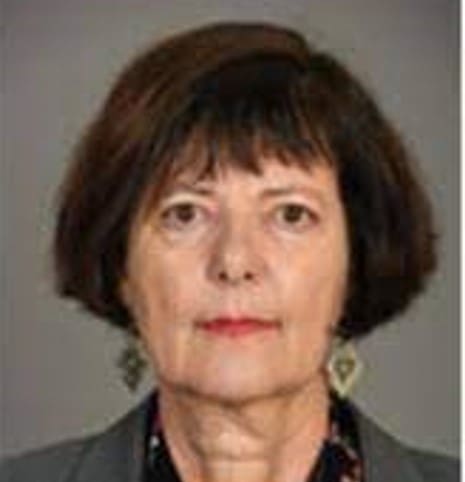
 MINISTER CREECY LAUNCHES THE 3RD NATIONAL STATUS OF BIOLOGICAL INVASIONS AND THEIR MANAGEMENT IN SOUTH AFRICA
MINISTER CREECY LAUNCHES THE 3RD NATIONAL STATUS OF BIOLOGICAL INVASIONS AND THEIR MANAGEMENT IN SOUTH AFRICA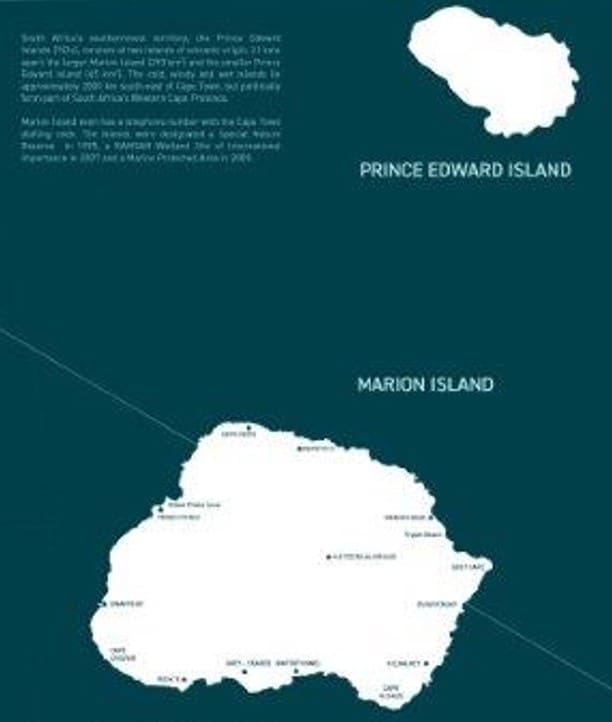 Thirdly, invasive species are devastating the unique and sensitive biodiversity of the Prince Edward Islands. For the first time, this report provides a separate assessment of the status of biological invasions and their management on the Prince Edward Islands. Although these islands are part of South Africa, their remote location and unique biodiversity warrant a separate assessment. Findings highlight the devastating impact of the house mouse, which is alien to the Marion Island. The mice feed on plants, and small animals including endangered seabirds. A bold plan to eradicate mice from the island has been developed and is due to be implemented in 2027. The eradication of mice from Marion Island is essential if its unique biodiversity is to be preserved.
Thirdly, invasive species are devastating the unique and sensitive biodiversity of the Prince Edward Islands. For the first time, this report provides a separate assessment of the status of biological invasions and their management on the Prince Edward Islands. Although these islands are part of South Africa, their remote location and unique biodiversity warrant a separate assessment. Findings highlight the devastating impact of the house mouse, which is alien to the Marion Island. The mice feed on plants, and small animals including endangered seabirds. A bold plan to eradicate mice from the island has been developed and is due to be implemented in 2027. The eradication of mice from Marion Island is essential if its unique biodiversity is to be preserved.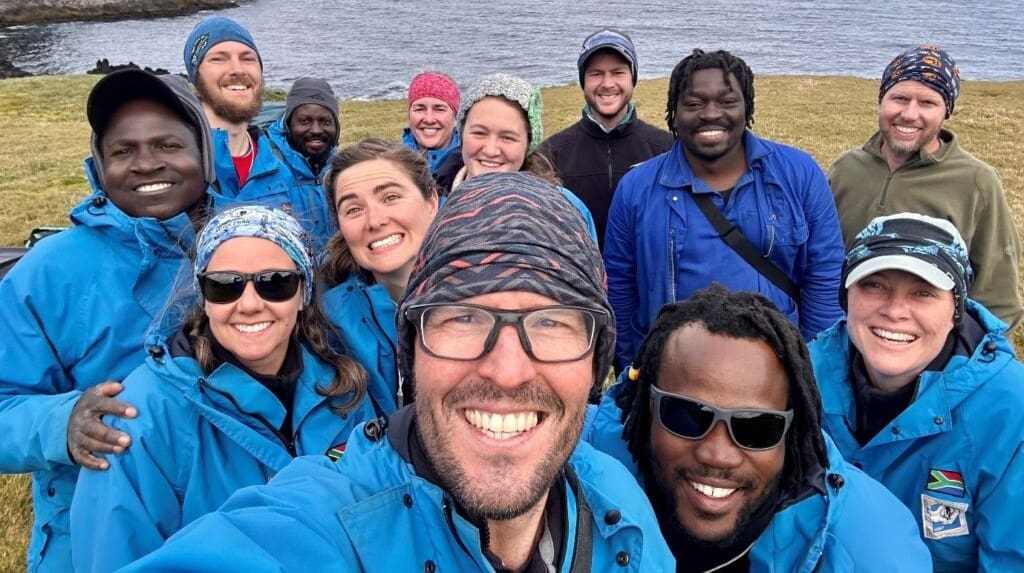
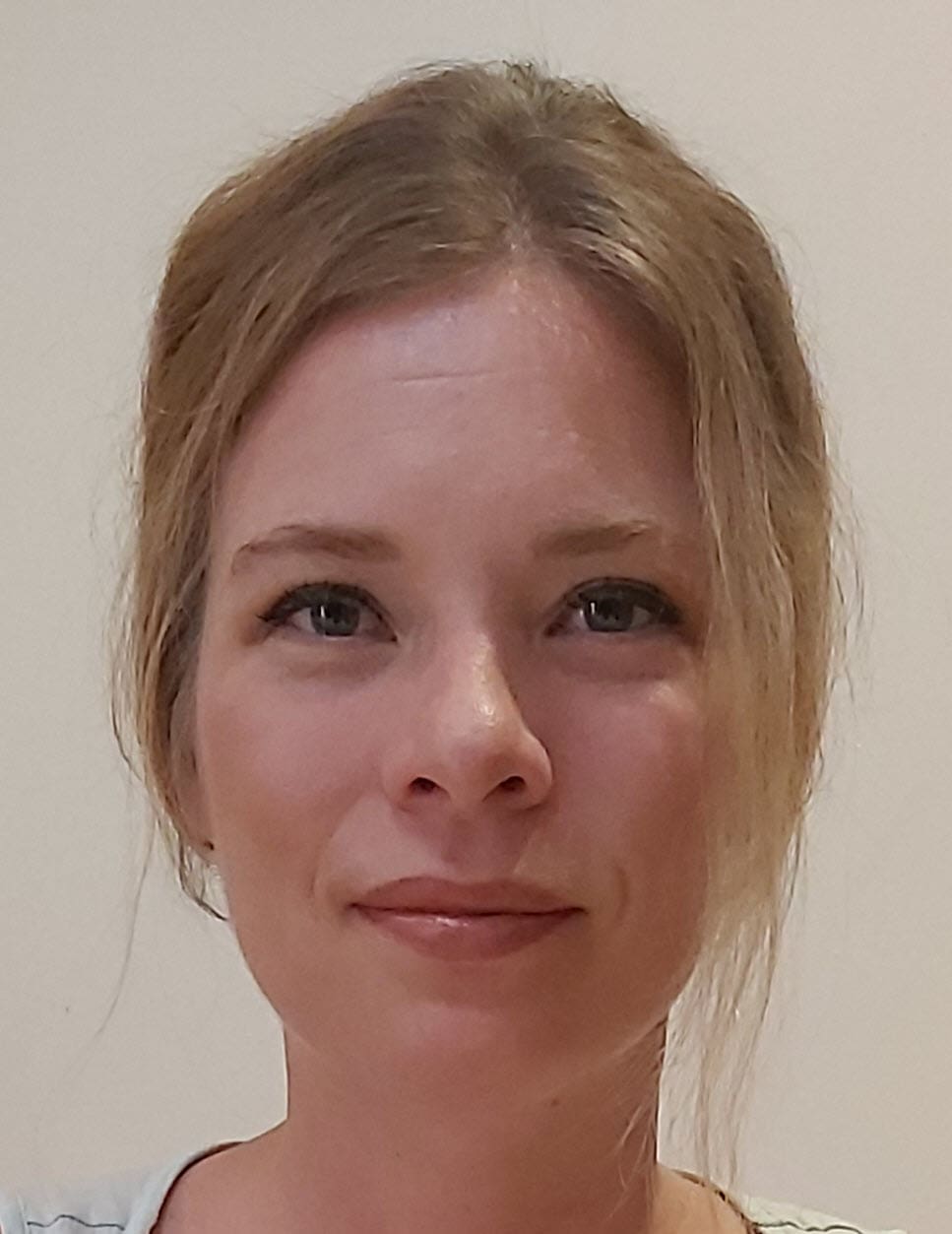 A session has been included in the 6th SANAP symposium to include the Prince Edward Island scientific survey members as they were arriving late on the 29 November. As a cross discipline on Data Management and the Summer Survey Participants. Christel Hansen chaired the session ‘Data and frameworks in the support of polar research’.
A session has been included in the 6th SANAP symposium to include the Prince Edward Island scientific survey members as they were arriving late on the 29 November. As a cross discipline on Data Management and the Summer Survey Participants. Christel Hansen chaired the session ‘Data and frameworks in the support of polar research’.  Above(l-r): Newi Makhado, Janine Schoombie, Chris Oosthuizen, David Hedding, Stefan Schoombie
Above(l-r): Newi Makhado, Janine Schoombie, Chris Oosthuizen, David Hedding, Stefan Schoombie
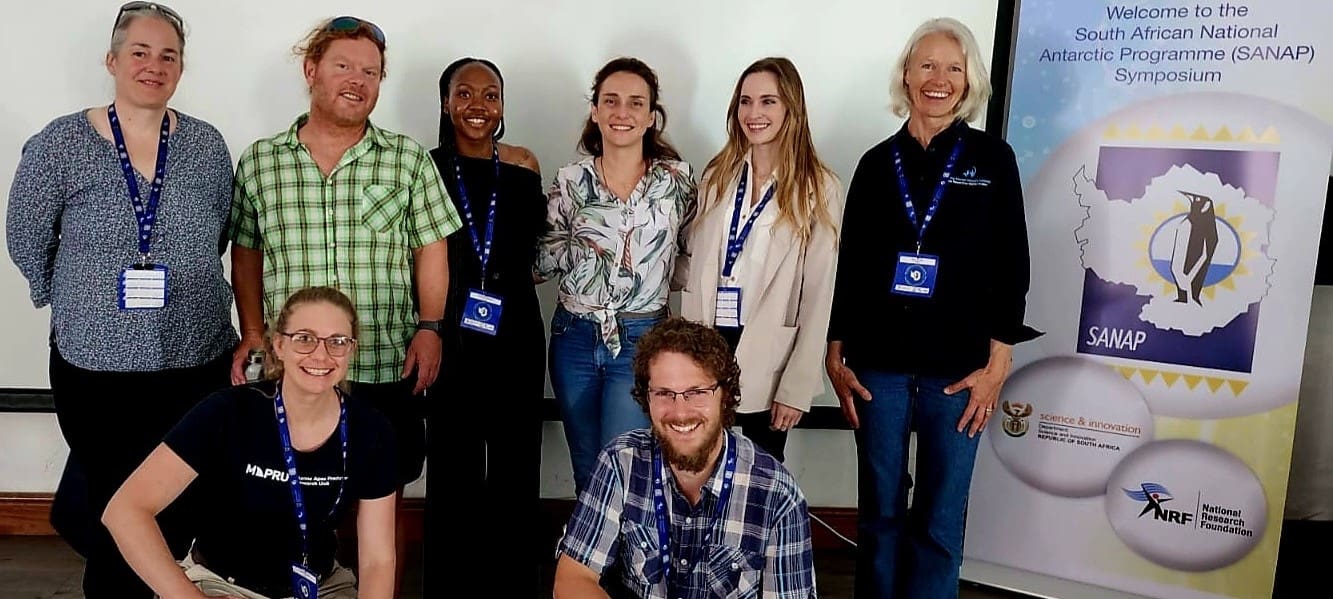
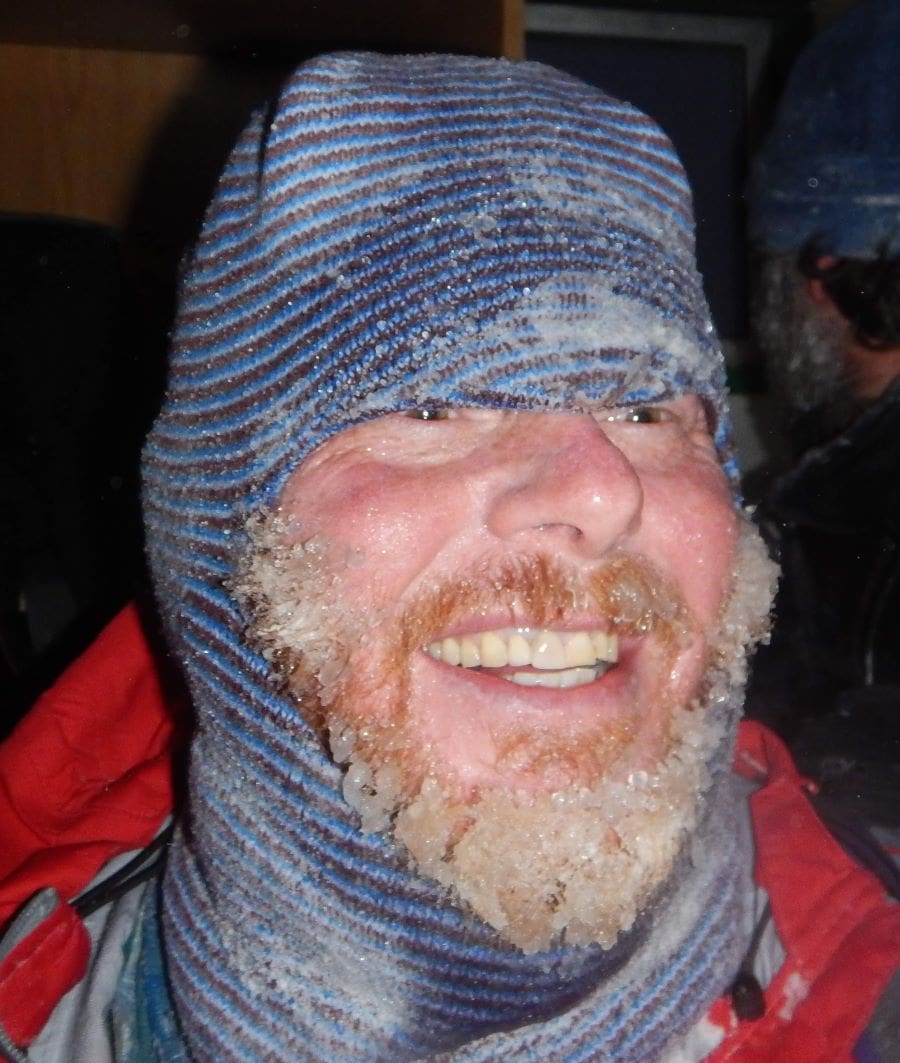
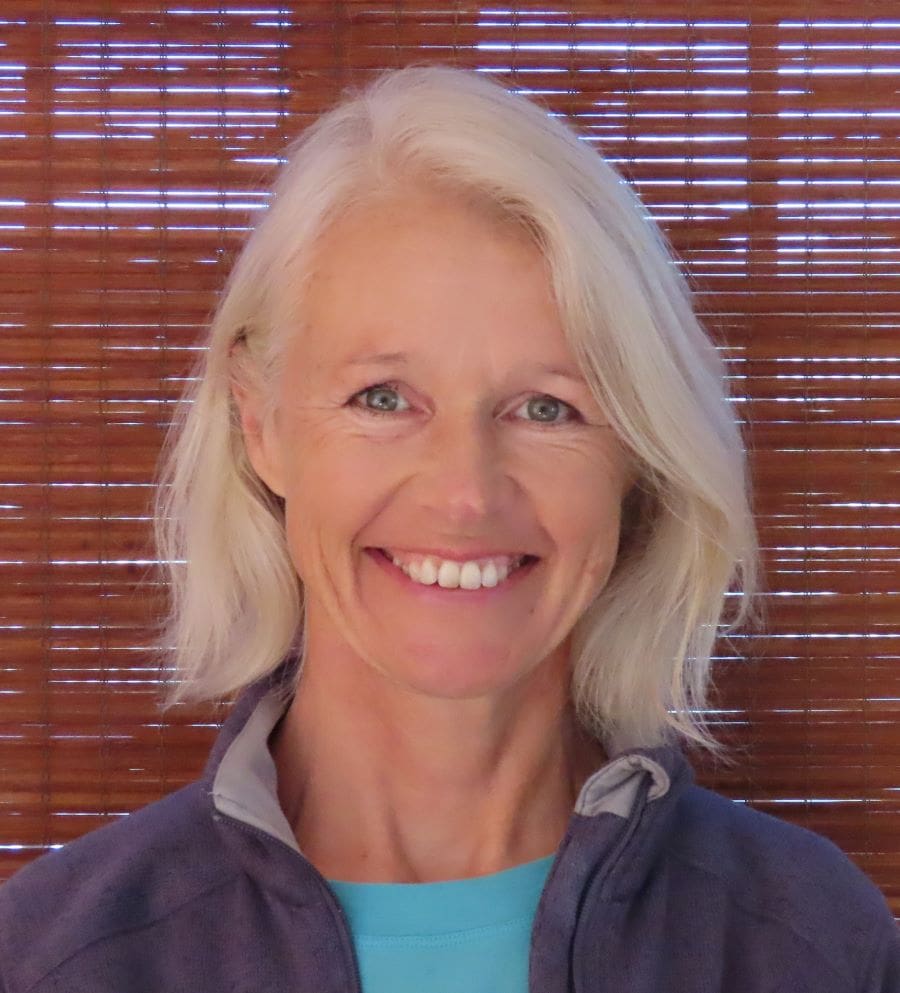 The last session within the
The last session within the  Above (l-r): Vonica Perold, Tegan Walker, Shamiso Banda, Danielle Keys, Eleanor Weideman
Above (l-r): Vonica Perold, Tegan Walker, Shamiso Banda, Danielle Keys, Eleanor Weideman To make your sponsorship to Mouse-Free Marion go to
To make your sponsorship to Mouse-Free Marion go to 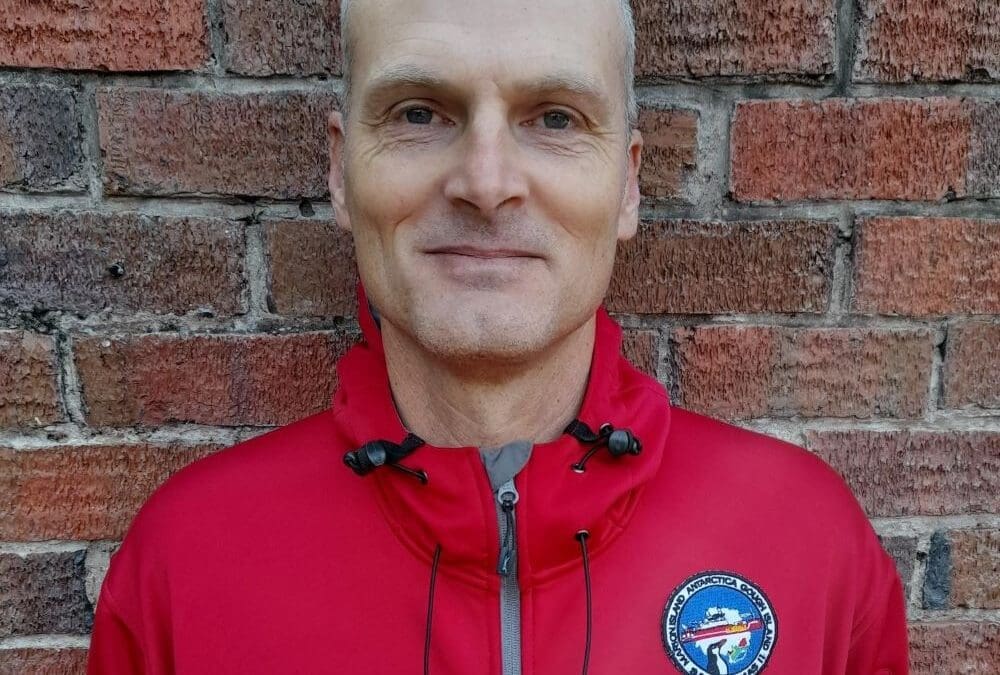
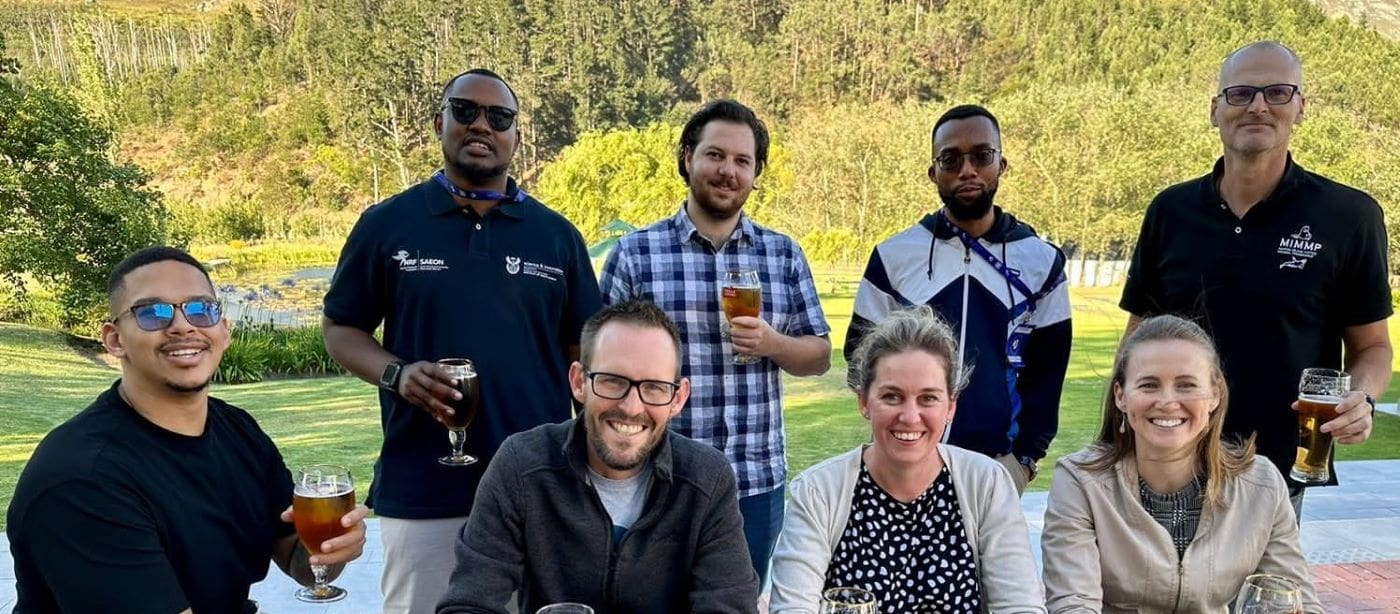
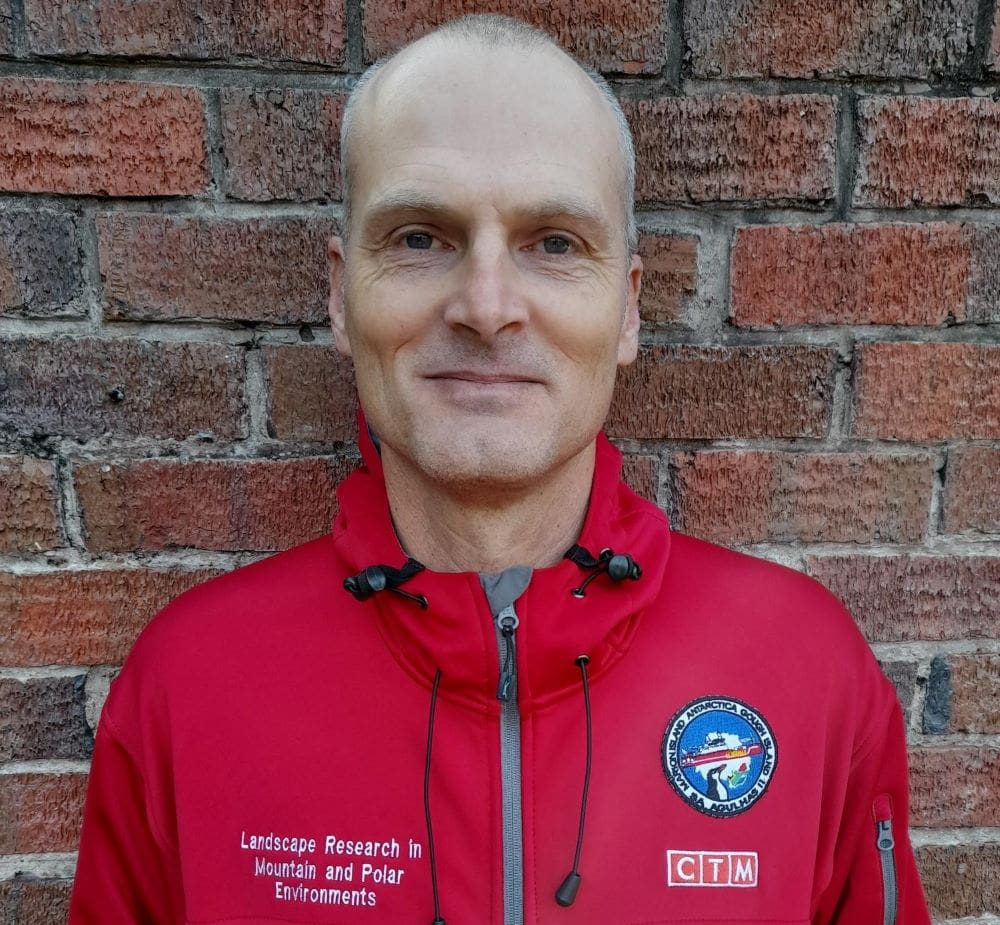 Prof Werner Nel chaired the session on earth system Observations under the title: “Antarctic and sub-Antarctic Earth Science”. The session opened with a talk by Geoff Grantham of University of Johannesburg and Werner then introduced research Landscape and climate interactions in the sub-Antarctic. The session was in the format of a panel and roundtable discussion. (Above group photo of Landscape research in mountain and polar environments)
Prof Werner Nel chaired the session on earth system Observations under the title: “Antarctic and sub-Antarctic Earth Science”. The session opened with a talk by Geoff Grantham of University of Johannesburg and Werner then introduced research Landscape and climate interactions in the sub-Antarctic. The session was in the format of a panel and roundtable discussion. (Above group photo of Landscape research in mountain and polar environments) In this session four higher education Institutions were represented.
In this session four higher education Institutions were represented. Above l-r: Geoff Grantham (UJ), Liezel Rudolph (UFS), Abu Nguna (UFH), Sibusiso Sinuka (UFH), Zenande Kabase(UFH)
Above l-r: Geoff Grantham (UJ), Liezel Rudolph (UFS), Abu Nguna (UFH), Sibusiso Sinuka (UFH), Zenande Kabase(UFH) 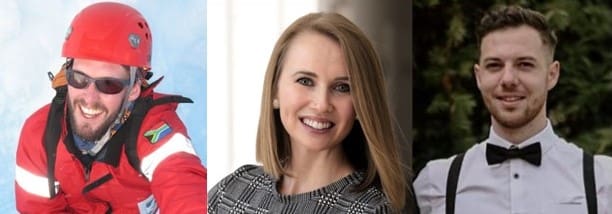 Other presentations of this project were given in the data management and humanities sessions as well as David Hedding in the summer survey as he only joined on 30 November due to the Prince Edward Island Scientific Expedition. (l-R: David Hedding (UNISA), Marike Stander (UFS), Bjorn Boyes (UFS)
Other presentations of this project were given in the data management and humanities sessions as well as David Hedding in the summer survey as he only joined on 30 November due to the Prince Edward Island Scientific Expedition. (l-R: David Hedding (UNISA), Marike Stander (UFS), Bjorn Boyes (UFS)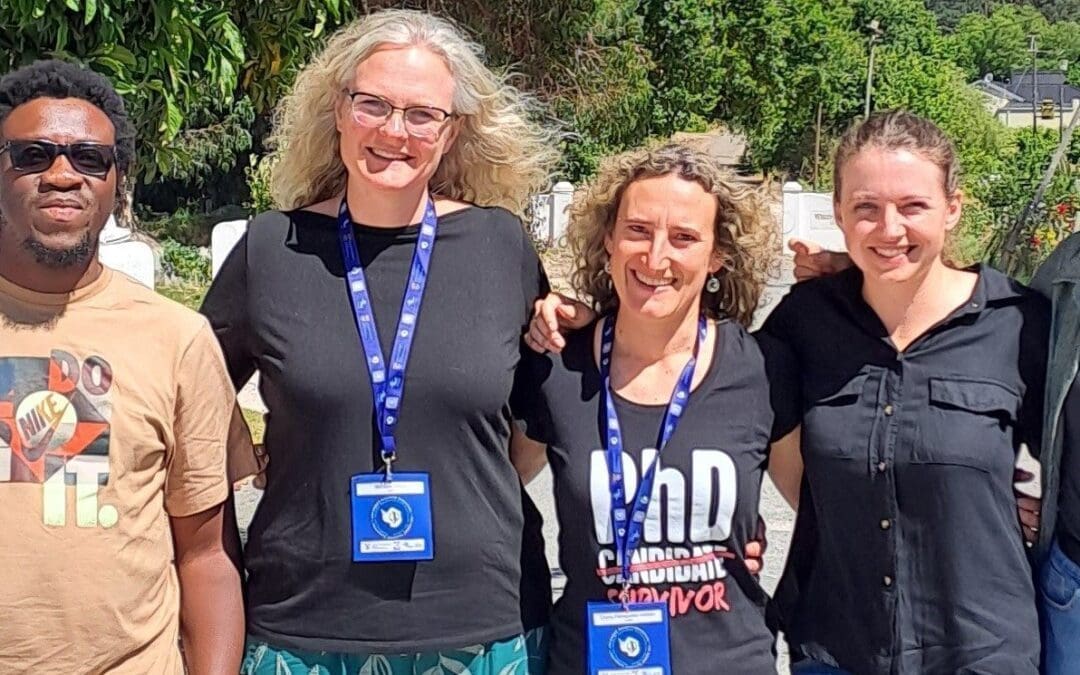
 Michelle Greve chaired another session on Ecosystems “Major threats to terrestrial sub-Antarctic ecosystems – climate change and invasions” , including how climate and species interactions are driving leaf endophyte communities, how warming directly, and indirectly (through heightened microbial decomposition and nutrient release) affects plant performance) affect plant growth, and how vegetation communities on Marion Island have changed since the 1960s on a warmer, drier and more invaded Marion Island. The session ended with a summary of the knowledge garnered from the National Status Report on Invasions, which includes a chapter on the Prince Edward Islands, and summarised all we know about invasions to the offshore territory.
Michelle Greve chaired another session on Ecosystems “Major threats to terrestrial sub-Antarctic ecosystems – climate change and invasions” , including how climate and species interactions are driving leaf endophyte communities, how warming directly, and indirectly (through heightened microbial decomposition and nutrient release) affects plant performance) affect plant growth, and how vegetation communities on Marion Island have changed since the 1960s on a warmer, drier and more invaded Marion Island. The session ended with a summary of the knowledge garnered from the National Status Report on Invasions, which includes a chapter on the Prince Edward Islands, and summarised all we know about invasions to the offshore territory. 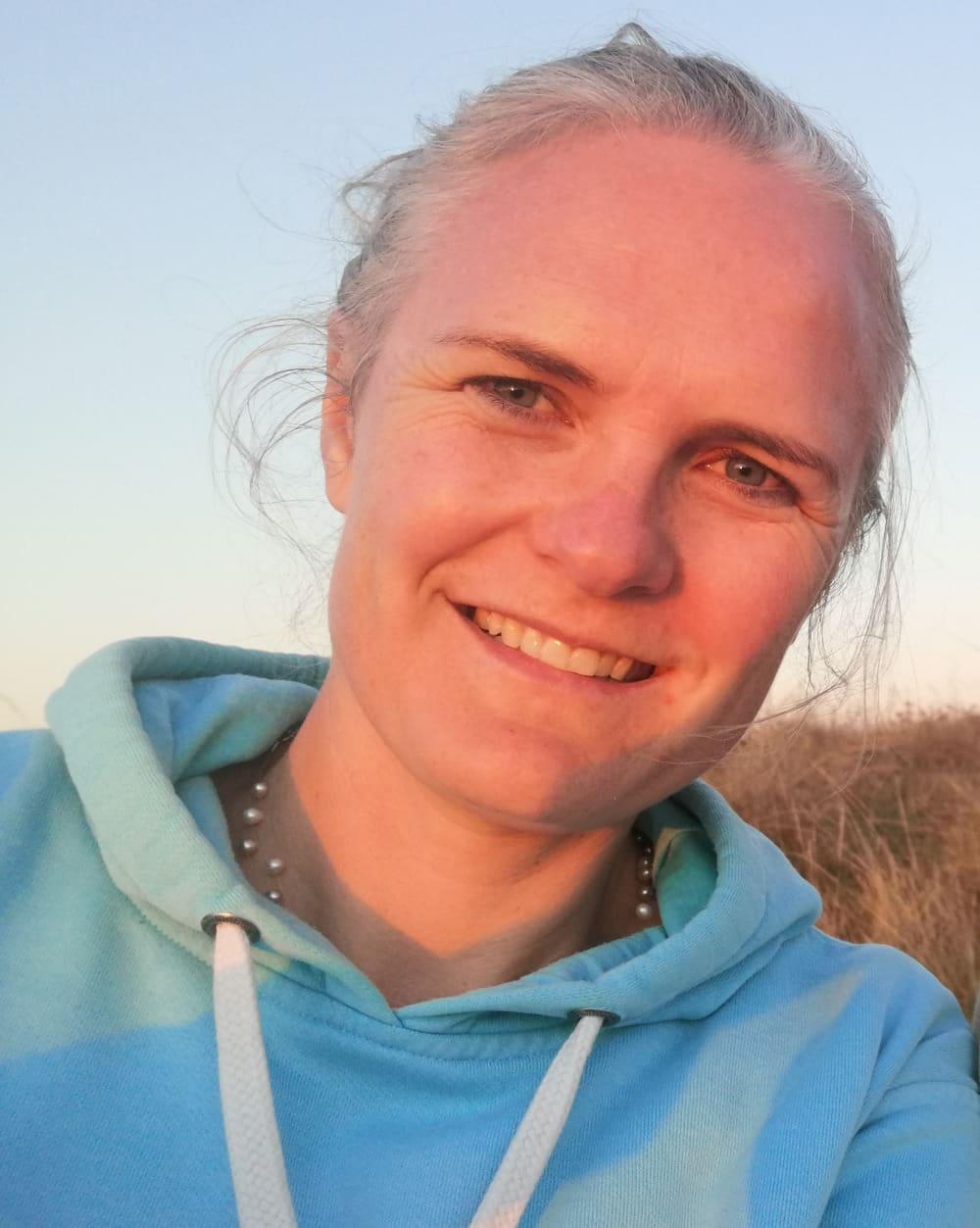 Michelle(right) gave an introduction and then was followed by oral presentations. (Above, l-r: Joshua Tsamba, Michelle Greve, Laura Fernadez-Winzer, Stephni van der Merwe, Nita Pallett) (Photo Credit: Michelle Greve)
Michelle(right) gave an introduction and then was followed by oral presentations. (Above, l-r: Joshua Tsamba, Michelle Greve, Laura Fernadez-Winzer, Stephni van der Merwe, Nita Pallett) (Photo Credit: Michelle Greve) Another student Janine Schoombie of Peter le Roux of University of Pretoria presented in the ad hoc session chaired by Christel Hansen. They only arrived on 30 November after the Prince Edward Island scientific voyage. “Studies of wind, plants and seabirds on Marion Island”. (
Another student Janine Schoombie of Peter le Roux of University of Pretoria presented in the ad hoc session chaired by Christel Hansen. They only arrived on 30 November after the Prince Edward Island scientific voyage. “Studies of wind, plants and seabirds on Marion Island”. (


